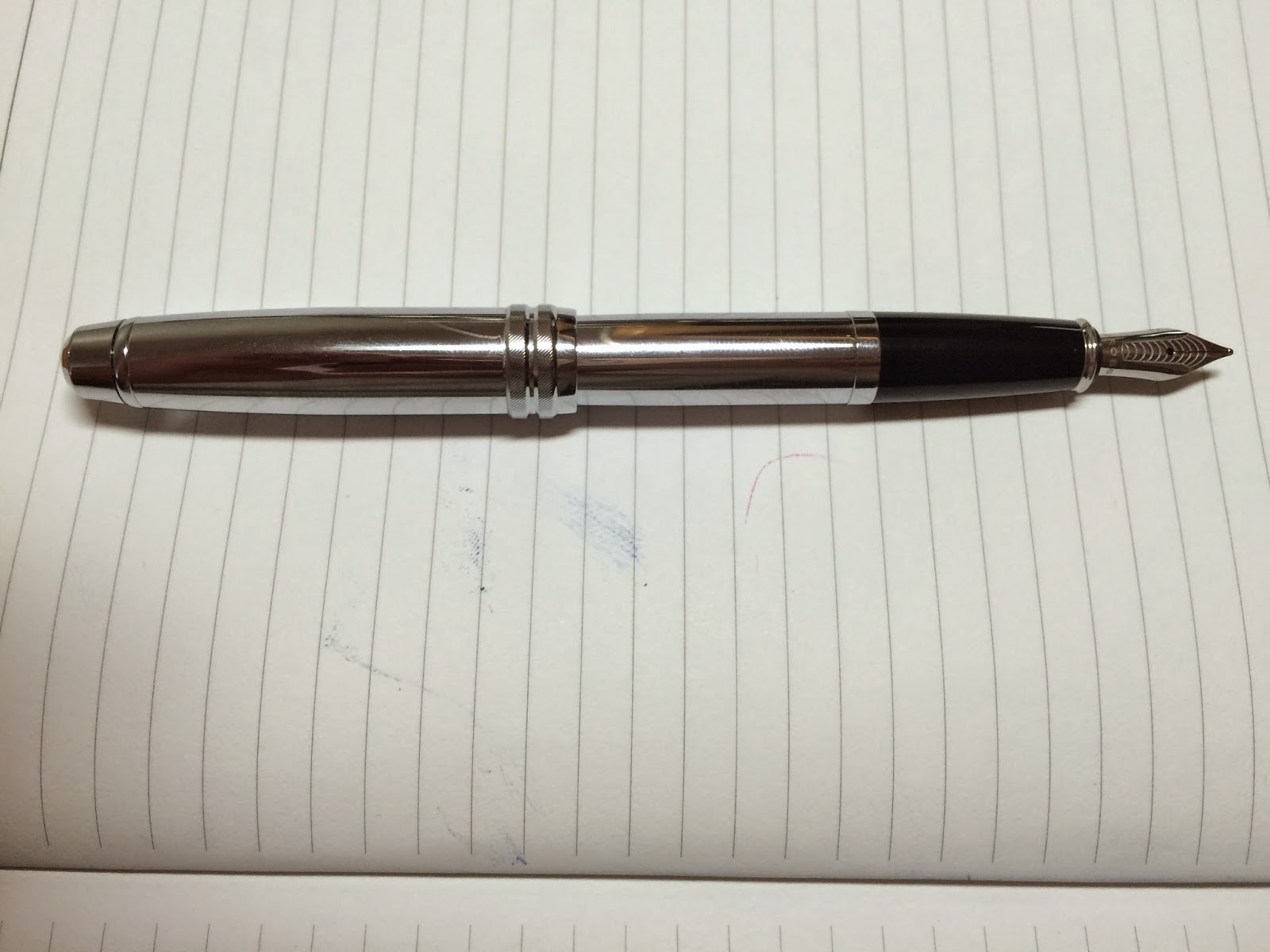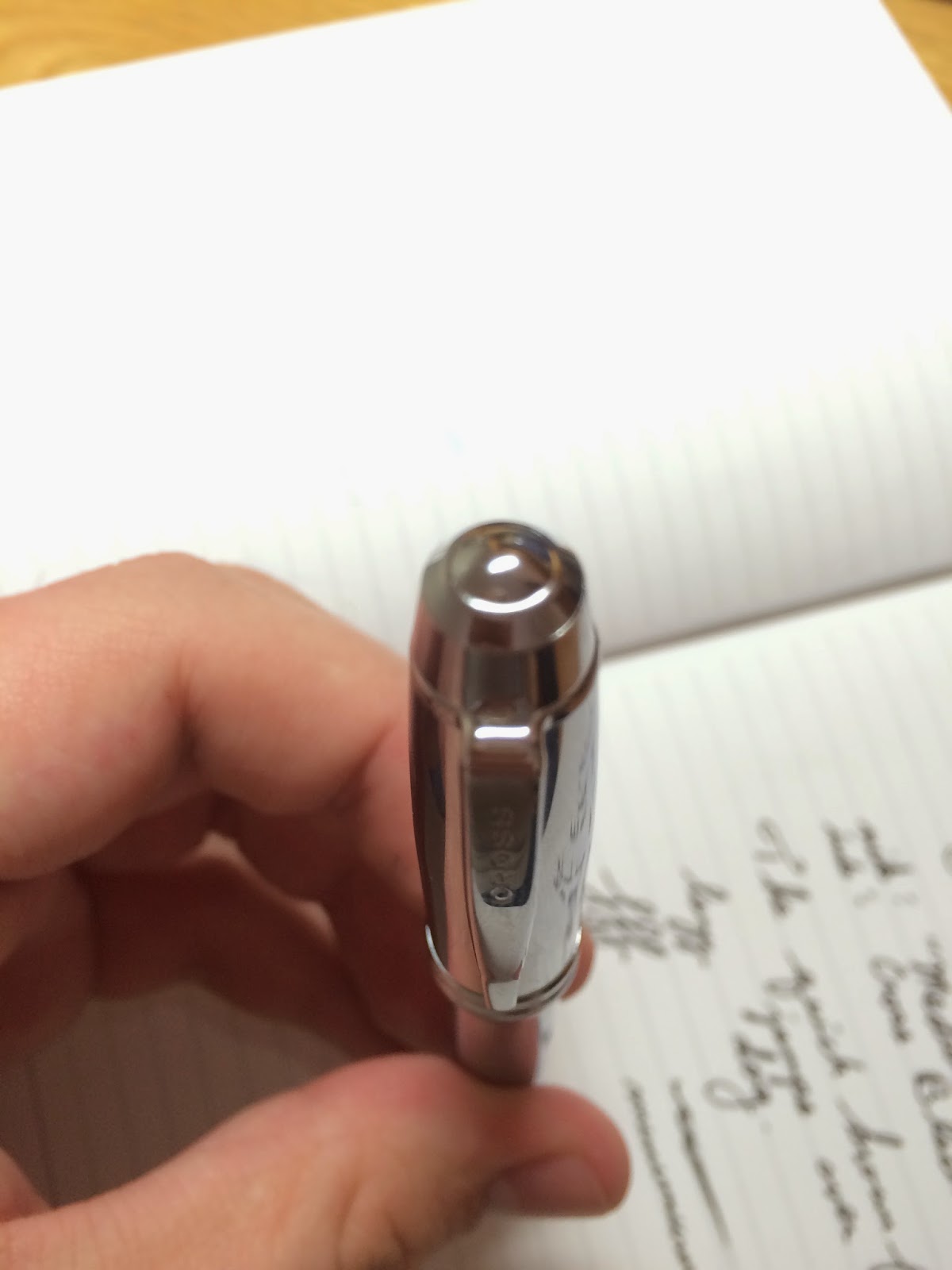So
you read my entry “Why Use Fountain Pens?” and are interested in buying
your first fountain pen. Congratulations! Buying a first fountain pen can be intimidating,
it can be a lot at once to think about. In this entry I hope to guide you in
the right direction for buying your first pen by introducing some tips on buying
pens as well as suggestions for what brands to consider purchasing from.
The Fountain Pen Itself:
There are a lot of
pens to choose from! From $3 disposable pens to $100,000 limited edition pens.
For your first fountain pen I highly recommend buying a pen in the “Medium”
price rage. The Medium price range is from $20-$40. Pens in this price range
are perfect for those starting out in fountain pens. This range of pens are
easily commercially available from many online retailers. Pens in this range
typically have well-tuned stainless steel nibs that will provide any writer
with a quality writing experience. However: these pens (as well as all pens)
are not perfect, and in a rare case will be unfit to write straight out of the
box. In this case please return your pen to the seller and replace it; but don’t
let it scare you from that brand, mistakes happen, give any brand a second
chance!
I recommend purchasing one of the following pens as your first:
•Lamy Safari/Al-Star: I reviewed the Al-Star and found it to be a fantastic pen. The Lamy Safari is simply a plastic version
of the same pen. Both of these pens come in a variety of nib sizes to choose
from. These pens only work with Lamy brand Ink Cartridges or (for use with
bottled ink) Lamy Converters.
•Kaweco Sport: these pens come in a large variety of
colors! Kaweco pens are commonly referred to in the “Pocket Pen” category,
however: do not ever carry fountain pens in pants’ pockets, that’s just an inky
accident waiting to happen! You can choose from nib sizes Fine, Medium, and
Broad. The Kaweco Sport only accepts International Short Size Ink Cartridges.
These pens are sold without a clip.
•Jinhao #159, X450, or X750: I reviewed the JinhaoX450 and found it to be a pleasant pen. The #159 and X750 are pretty
much the same as the X450, so if you read my review of that pen you’ll know
what to expect. These pens are more on the classic looking side, which can be
appealing. All these pens are metal and are larger than most pens, so if you
have smaller hands I would stay away. All Jinhao pens come in a Medium size Nib
only and each comes with a Converter for use with Bottled Ink.
•Platinum Balance: This is a Japanese made pen, and its
quality shows! The nibs are only Medium sized and the pen does come with a Converter
for use with Bottled Ink. Again these are pens that fall into the more classic
look.
Cartridges
VS. Bottled Ink
All of the aforementioned
pens are able to take Ink Cartridges. A cartridge is a plastic tube containing
ink that is inserted into the pen. Cartridges tend to come in more standard
colors and are less expensive than bottled ink. Bottled ink is drawn into a pen
via some form of piston-operated tool, in most cases that is a Converter. There
are many different colors to choose from with Bottled Ink, almost any color you
can think of! If you have a converter cleaning your pen is much easier; you
simply operate the converter while drawing in clean water and flush out the ink.
If you decide to purchase Bottled Ink, I recommend these brands:
•Noodler’s Brand Ink: This ink is less costly and has
over 100 colors to choose from!
•Lamy Bottled Ink: These inks come in more standard
colors, but standards are good too. Each bottle has some blotting paper for
wiping off your nib.
•Diamine Ink: Another brand of inks with many fun
colors. These inks are on the wetter side and they will bleed through and
feather on lesser quality paper.
•Parker Quink: If you’re looking for a great black or
blue ink then this is the brand to go with. Quink only comes in Black,
Blue/Black, and Blue. These inks are quick drying and made for use on lesser
quality paper. Also these inks, at least Black, are easily found at Staples.
Paper:
Paper
is, without a doubt, the most boring aspect of fountain pens. But yet it is so
important! Without paper we couldn’t use our favorite writing instruments.
Investing in quality paper will instantly make your experience writing with
fountain pens better. Lesser quality paper will make your ink Feather (giving
your writing a blotched look) and Bleed Through (when ink seeps through to the
next sheet of paper in your notebook).
Consider buying one of these types of paper:
•Rhodia Brand Paper: This paper is a staple for almost
every pen user. Rhodia paper is incredibly consistent and offers a great
experience. Coming in many sizes of notebooks each with different lining
options (Ruled, Dots, Grid, or Blank). I always carry a size 9”x11.5” Rhodia
Ruled Notebook.
•Clairefontaine Paper: High quality paper imported
from France. Perfect for writing letters, I wouldn’t recommend using in an
everyday basis.
•Staples 20LB Paper: While it isn’t the highest
quality paper, it will still get the job done.
Where to Buy
Where to Buy
I’ve
only had fantastic experiences buying fountain pen related products from TheGoulet Pen Company. I haven’t received any sponsorship to say this, but
in my experience they have the best customer service in American online pen
sales. I highly recommend buying your first pen and supplies from them.
I wish you luck in buying your first fountain pen.
Remember: buy the pen that makes you happy, one that will hopefully enjoy
writing with everyday!







.jpg)
.jpg)
.jpg)
.jpg)
.jpg)
